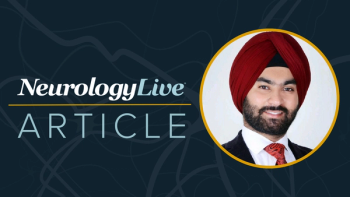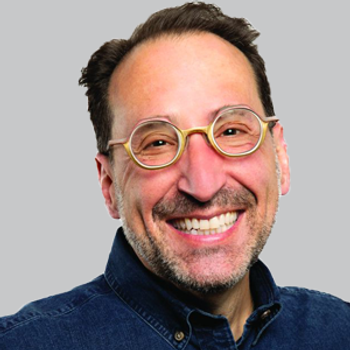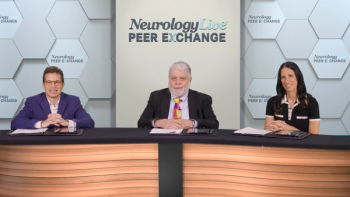
Epilepsy Surgery Proves Effective for Children With Tuberous Sclerosis Complex
Surgery for eligible patients was shown to increase rates of seizure freedom, as well as improve developmental levels, among those with TSC.
Investigators concluded that epilepsy surgery is a viable option for eligible children with tuberous sclerosis complex (TSC), following findings from a recent study in Epilepsy & Behavior, published by Elsevier. Children with TSC-related epilepsy saw improved quality of life postsurgery, as seizure freedom was significantly related to developmental level, which was impacted by factors such as social adaptation and impact on family.
A total of 85 children with TSC-related epilepsy were included in the study, with a median age of 3.3 years (interquartile rang [IQR], 1.8-6.3). Patients were divided into surgical or nonsurgical cohorts, depending on eligibility, with 34 patients (40%) undergoing epilepsy surgery.
At the time of follow-up, patients had a median age of 11.5 years (IQR, 7.8-15.5) and the rate of seizure-free patients was higher in the surgical cohort compared to then nonsurgical cohort (P = .037). Investigators found that 52.9% (18 of 34) of those who underwent surgery were seizure-free for 12 months or longer (95% CI, 35.1-70.2), compared to the nonsurgical cohort, where 30% (15 of 51) of patients remained seizure free (95% CI, 17.9-44.6). Additional data showed that 2 years after surgery, 39.4% of patients (13 of 33) in the surgical cohort were seizure-free (95% CI, 22.9-57.9%); and after a median postsurgical follow-up period of 8 years (range, 2.6-10.8), 76.9% of patients (10 of 13) were still seizure-free (95% CI, 46.2-95%).
“The developmental level of the children was associated with seizure control. It was higher in the surgical cohort compared to the nonsurgical cohort and most prominent compared to nonseizure-free children at follow-up,” corresponding author Christian Bien, PhD, director of the department of epileptology, Mara Hospital, Bethel Epilepsy Center, Bielefeld University in Bielefeld, Germany, et al wrote. “Our findings are remarkable in light of the data that identified earlier seizure onset and higher seizure frequency as negative predictors of developmental outcome, as there was no difference in seizure onset between our cohorts and a higher initial seizure frequency in the surgical cohort.”
Developmental level was also found to be higher in the surgical group compared to the nonsurgical group at follow-up (P = .036). Patients in the surgical group had an average level of 67.8 (standard deviation [SD], 22.1), compared to the nonsurgical cohort, which had an average level of 58.0 (SD, 20.3).
Within the surgical cohort, patients who were seizure-free also showed a higher developmental level when compared to nonseizure-free patients (P = .004). This was similar to the nonsurgical group, where seizure-free patients also showed higher developmental levels, but the difference was not statistically significant (P = .089).
In both groups, quality of life, social adaptation, impact on family, and parental concerns were significantly correlated to developmental level (P ≤.001). Seizure freedom also decreased parental concerns due to epilepsy in both surgical (P <.001) and nonsurgical (P = .018) cohorts; seizure freedom impacted this factor to a greater extent in the surgical cohort, but it did not show statistical significance (P = .098). Investigators discussed the need for presurgical evaluation and subsequence surgery to be performed at specialized epilepsy centers.
“Children with refractory seizures not eligible for surgery are probably the most severely affected group of children with TSC (with diffuse epileptic activity and epileptic encephalopathy),” Bien et al said. “Epilepsy surgery not achieving seizure freedom, however, might have a negative impact on the families of children with TSC. Therefore, careful selection of surgical candidates among patients with TSC with refractory epilepsy is mandatory to avoid negative impacts on those families with the highest burden of disease who need other forms of support.”
Antiseizure medications (ASMs) were also considered, with 82.4% of the surgical cohort and 94.1% of the nonsurgical cohort takings ASMs at follow-up. The mean number of ASMs per patients within the surgical cohort decreased significantly (2.21 [SD, 0.74] to 1.56 [SD, 1.05]; P <.001). Mean number of ASMs were stable within the nonsurgical cohort (2.12 [SD, 0.76] vs. 2.14 [SD 1.02]; P = .616).
The study was limited due to the wide age range of participants, as well as questionnaire availability being limited to a small group of patients at presurgical evaluation. As a result, investigators were unable to perform longitudinal within-group comparisons for development level via the Vineland Adaptive Behavior Scale or quality of life with the DISABKIDS Questionnaire.
REFERENCE
Stomberg M, Bien CG, Kalbhenn T, et al. Epilepsy associated with tuberous sclerosis complex in childhood: Long-term outcome in children after epilepsy surgery and children non-eligible for epilepsy surgery. Epilepsy Behav. Published online July 23, 2021. doi: 10.1016/j.yebeh.2021.108210
Newsletter
Keep your finger on the pulse of neurology—subscribe to NeurologyLive for expert interviews, new data, and breakthrough treatment updates.






































